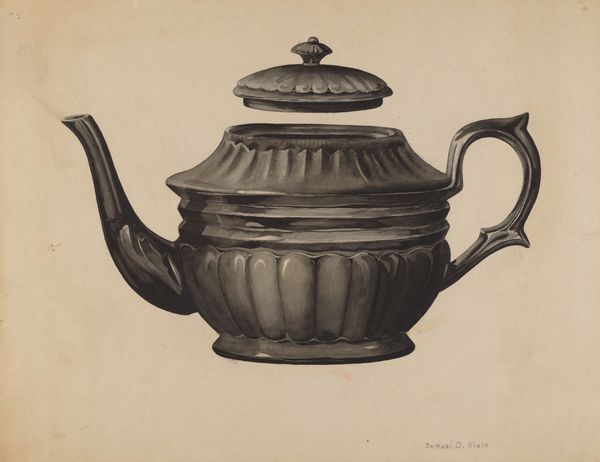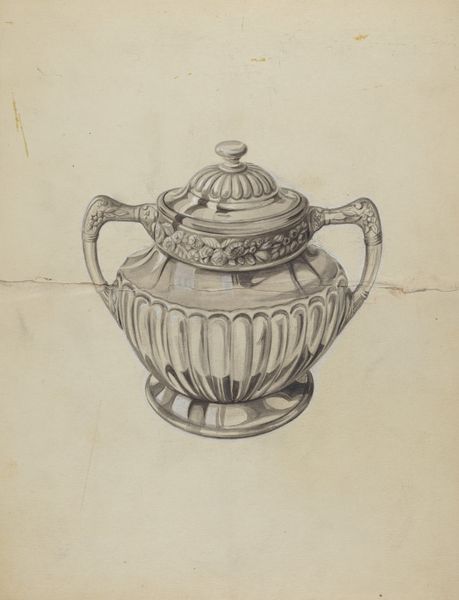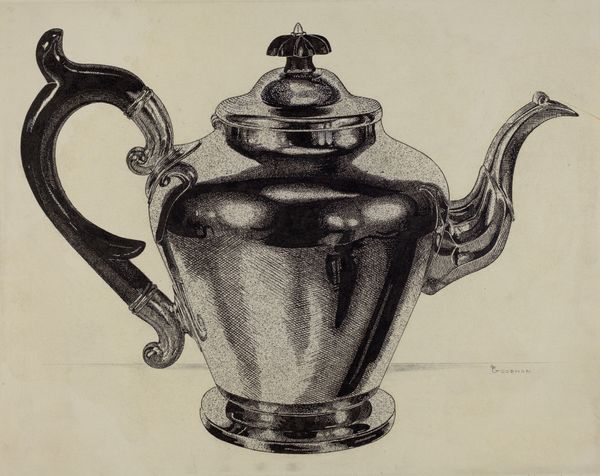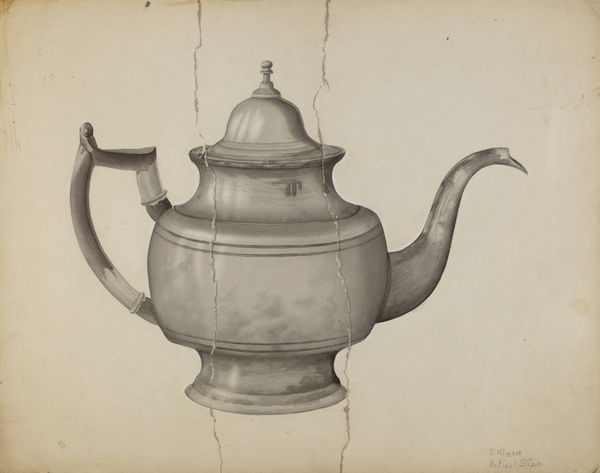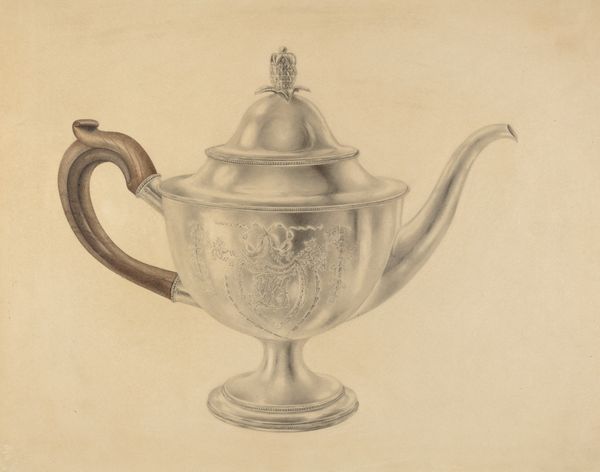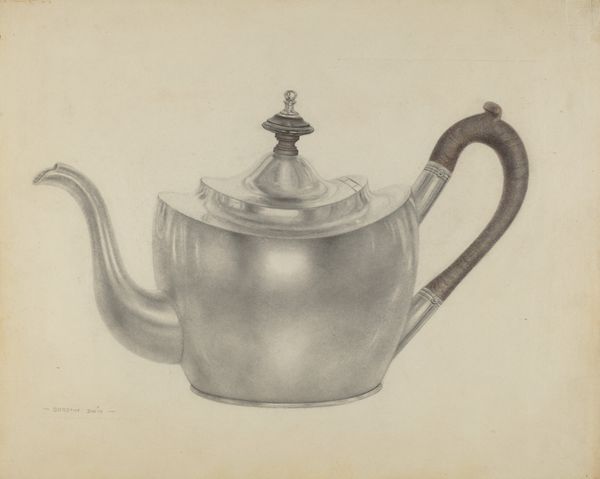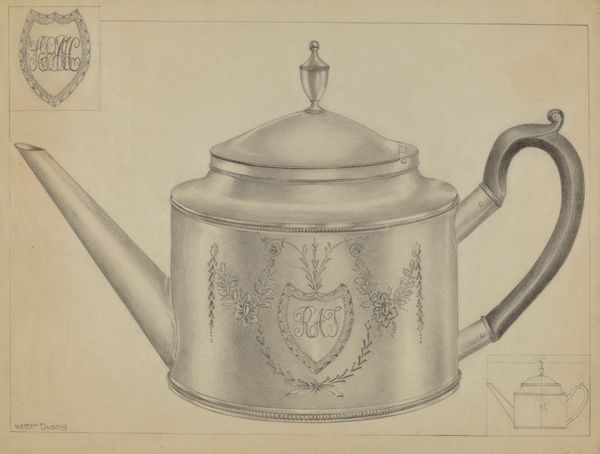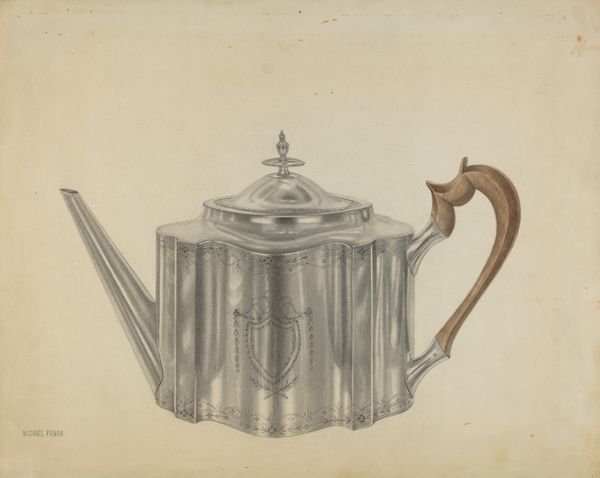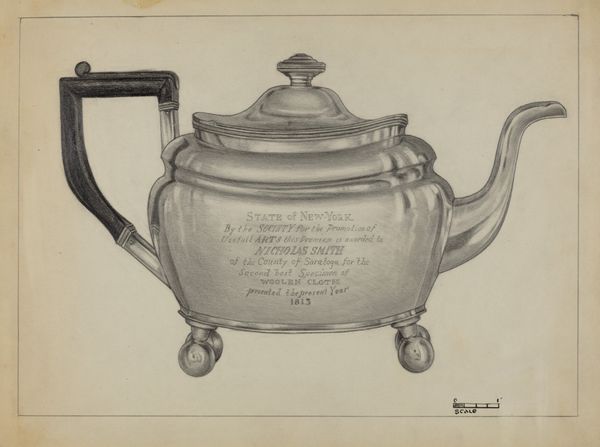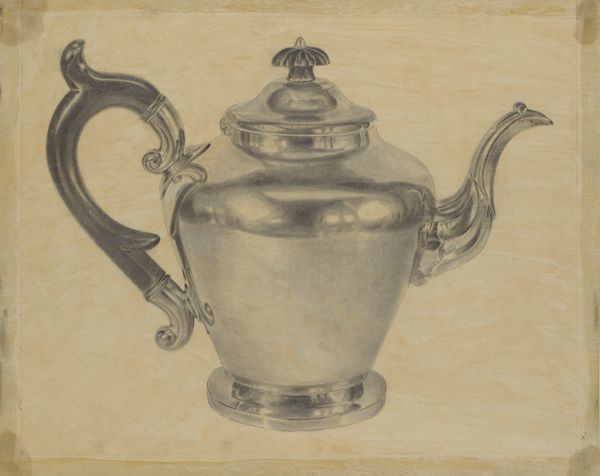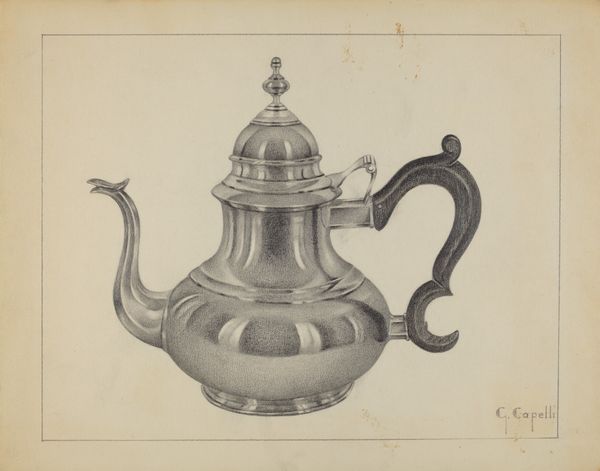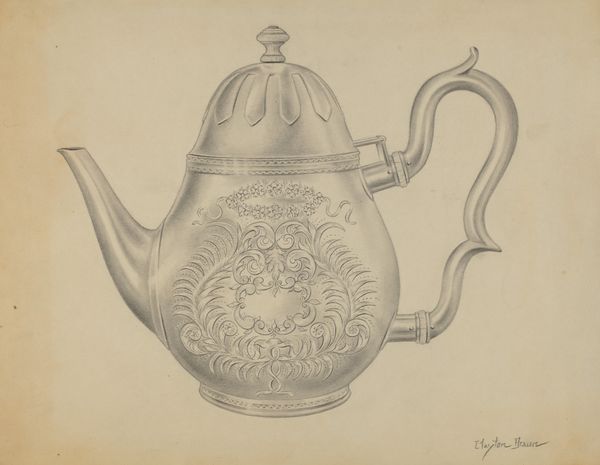
drawing, ink
#
drawing
#
caricature
#
ink
#
realism
Dimensions: overall: 24.3 x 35.5 cm (9 9/16 x 14 in.) Original IAD Object: 5 1/2" high; 12 1/2" wide
Copyright: National Gallery of Art: CC0 1.0
Curator: Ah, what a lovely object! This drawing, titled "Teapot," was created by Samuel O. Klein sometime between 1935 and 1942, using ink on paper. The piece possesses an unexpected, almost melancholic mood to my eyes. Editor: I see that somber tone too. There's a certain stillness to the image, heightened by the floating lid. The monochrome palette really emphasizes the intricate forms; the light plays off the curves of the pot, creating a fascinating rhythm. It almost looks like an exercise in pure form, not so much a rendering of a functional object. Curator: That floating lid speaks to me. Teapots, and the rituals surrounding them, carry centuries of symbolic weight, often linked to comfort, domesticity, even social gatherings. But by detaching the lid, Klein hints at a disruption of that tradition, a sense of incompleteness or perhaps longing. The void where the lid should be, it's heavy with unfulfilled potential. Editor: I am more taken by the sheer level of observation, the detailed gradations of tone, and the semiotic implications of its form. See how the spout and handle, both elegant curves, mirror each other yet perform different functions? And the way Klein models the reflective surface is truly remarkable given that he's only using ink! This emphasis of volume with careful control, creates something akin to sculpture. Curator: Indeed, it's technically quite accomplished. Yet, for me, the teapot itself evokes a specific era – the austerity of the Depression years, the lingering traces of Victorian ornamentation on everyday objects. A simple teapot is imbued with meaning due to it. The act of carefully rendering it speaks volumes about valuing simplicity amid hardship. Editor: While you attach those values onto the image, I perceive an almost hyper-real quality despite being executed with only ink. Perhaps because it's extracted from any environmental context? So you're left with form, tone, texture...the bare bones of visual representation. Curator: In a way, that absence of context is its own kind of statement. Stripped of its surroundings, the teapot becomes a vessel for our own interpretations, memories, or anxieties. Doesn't it also become more universal, less tied to a particular time and place? Editor: Perhaps, although you seem intent to imbue it with memory and emotional baggage that I can appreciate, but doesn't personally resonate for me. Instead I see a skillful study of an object divested of its original function. It now exists, as an object, anew! Curator: Well, I suppose that speaks to the power of art – the very same image can provoke vastly different readings and emotions. It is something special, even though such interpretations may contradict the image itself! Editor: Precisely. To each their own… it just shows that pure form never goes out of style, irrespective of interpretation.
Comments
No comments
Be the first to comment and join the conversation on the ultimate creative platform.
